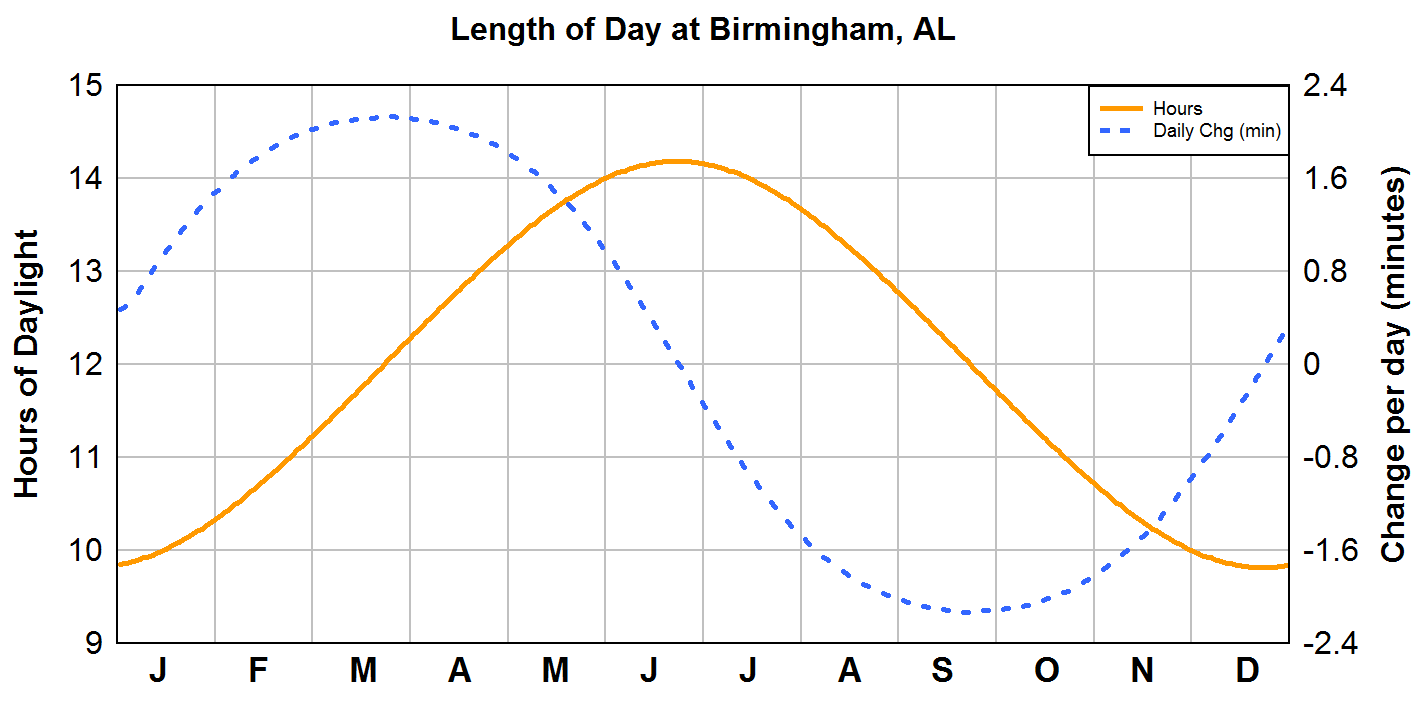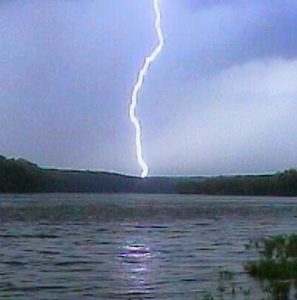
As we move through Spring and toward Summer, the days have gotten a lot longer already. As shown by the orange curve above, today, April 24, we will have 13 hours and 6 minutes of daylight. This is after the minimum on the Winter solstice, Dec 21 2018, when we only had 9 hours and 50 minutes of daylight. The blue dashed curve indicates the change in daily daylight in minutes per day. Right now, we are still gaining almost 2 minutes per day, but that daily gain is slowing down. It will go to negative on the Summer solstice, the longest day of the year, June 21. That day, we will have 14 hours and 23 minutes of daylight, and the sunset is at 8:00 pm CDT.
For you math nerds like me out there, notice the length of day is basically a periodic function, and the change per day is its derivative, another wave function.

The sun is also getting higher in the sky. The above shows the sun’s path across the sky (compass direction and angle above the horizon) on 4 days in 2019. Note that today, the sun rose in the ENE at 6:07 am, reached it zenith in the sky at 70 degrees above the horizon at 12:45 pm, and then sets in the WNW at 7:23 pm. It has moved a lot since March 1, when it will still rising in the SE and setting in the SW, and its highest angle above the horizon was only 49 degrees.
The pictures below show sunset on the Warrior River at Bluff Creek looking due west from roughly the same spot on two dates, Nov 30 (left) and May 4 (right). Note that the sun is the SW sky on Nov 30, and in the NW sky on May 4.

The angles above the horizon matter, because when the sun is high in the sky, its angle is much more direct, and the incoming sun rays do not get spread out across a larger area of the ground like it does in Winter. For example, back on Jan 1, at its peak even with a clear sky the sun only produced 762 Watts of energy per square meter of ground, and the total daily solar energy was 0.0049 Watt-hours per square meter. This is why the northern hemisphere gets cold in winter. Low sun angle, short days, small amounts of incoming solar energy (none in polar regions where it stays dark for weeks or months).
Today, on the other hand, we get 1271 W/m2 at solar noon, and a total of 0.0104 Wh/m2, twice as much energy as on Jan 1. At its peak on June 21, we will get 0.0119 Wh/m2.

Some people ask why the hottest weather lags about a month or two behind the peak solar energy, and the coldest weather lags about a month or two behind the minimum. This is shown for Birmingham in the chart above (length of day and average high temperature). This is because the sun is slowly heating up the ground and the atmosphere in the northern hemisphere in the spring and early Summer, while the outgoing longwave radiation and lack of sunlight in Winter slowly cools the ground and the atmosphere in Autumn and early winter. It takes time for energy to heat things up, and loss of energy to cool things down.
Dr. Tim Coleman
Twitter @timbhm
